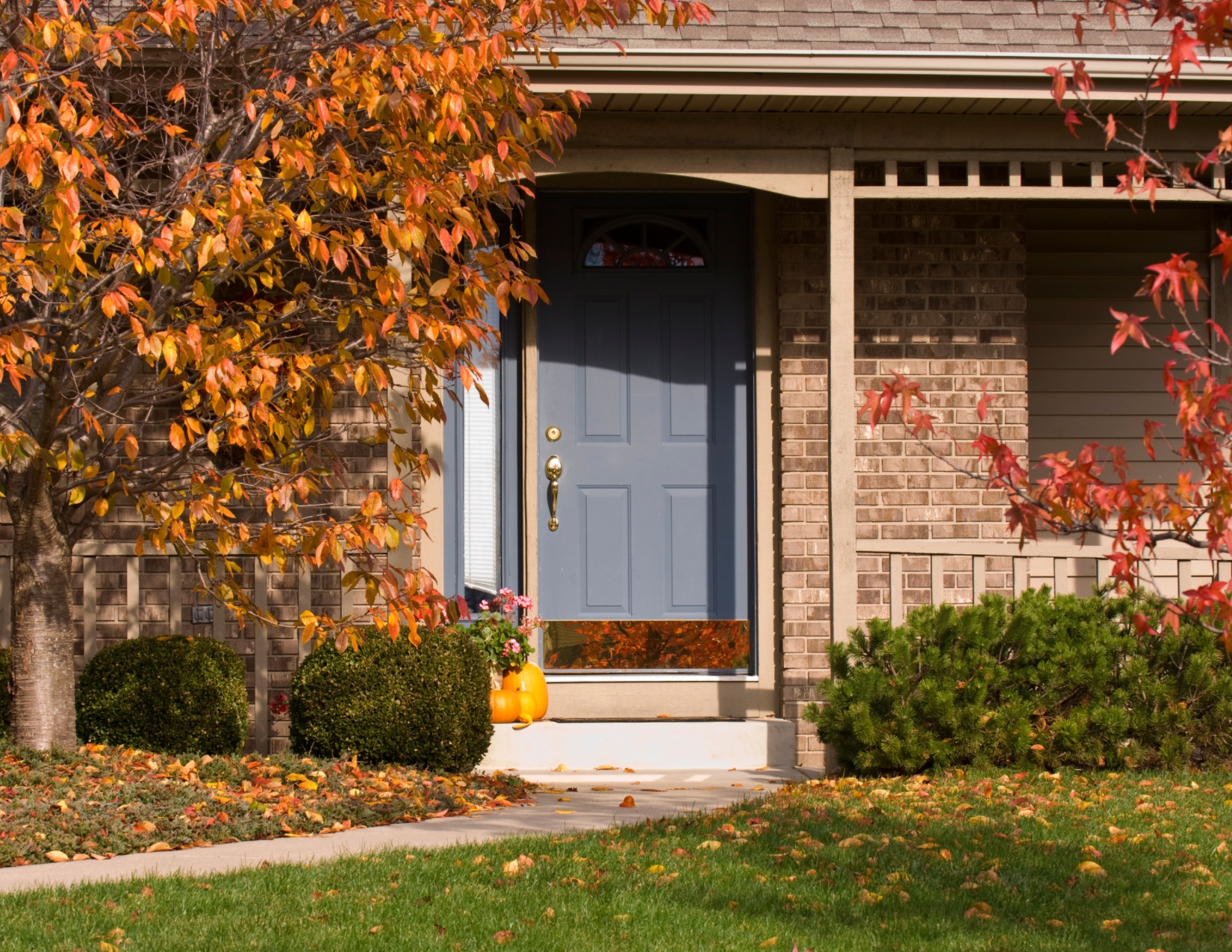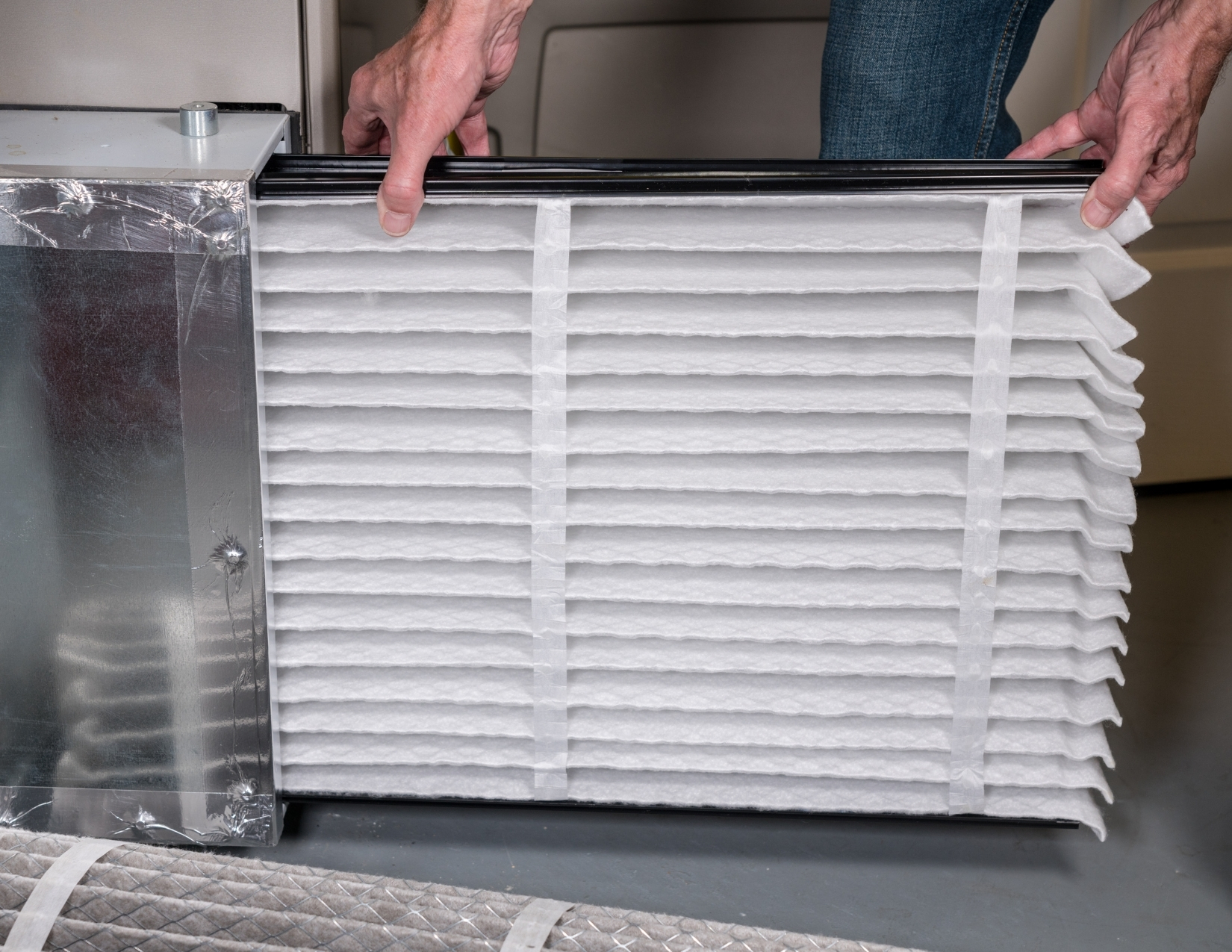
As the leaves turn colors and the days get shorter we’re reminded that Summer doesn’t last forever. And with the Fall season approaching there is no better time to prepare your home for everything that comes along with it. So grab your tools, roll up your sleeves, and get to work!
1. Clean or replace gutters
It is important to clean your gutters at least once a year. When gutters fill with debris, they become clogged and can result in water getting under the roof and into the foundation. Furthermore, clogged gutters can lead to ice dams in the winter.
To clean your gutters, ensure you have a sturdy, extendable ladder and a plastic scoop or plastic kitchen spatula. Once you have scooped the debris out of the gutters, use a garden hose to flush the gutters and downspouts. This will clear out remaining debris and show signs of any leaks in the gutters.
2. Check for drafts and install weatherstripping
Checking for drafts is a crucial step in preparing for the fall and winter months. If you skip this step your heating bill may come as a shock to you later on.
To locate drafts in your home, turn off all combustion appliances and close all windows and exterior doors. Then turn on all exhaust fans to suck the air out of the rooms you are testing. Light an incense stick and move it past common leak sites such as doors and windows. Wherever the smoke wavers or blows out, there is a draft. Any drafts you locate can be eliminated using caulk or weatherstripping.
3. Drain outdoor faucets and sprinkler systems
The last thing anyone wants in the dead of winter is a burst pipe which is why draining your outdoor faucets and sprinkler systems is so important.
To drain your outdoor faucet, turn off the water supply valve and remove any hoses or faucet connections. Then turn the faucet on full blast and let it run until no more water comes out. Turn the faucet back off. A similar method is used to drain sprinkler systems.
Shut off the water supply to the sprinkler system. Then open the valves located at the ends and low points of the piping until the water completely drains. Don’t forget to also drain the backflow device. Close the valves.
4. Fix any cracks in the driveway
Cracks in your driveway may seem low on the totem pole of things to fix before winter strikes, but that’s not the case. Even a tiny crack can become a large problem if not fixed before the snowfalls.
When the cracks fill with water and freeze, they expand and become even bigger which can lead to structural damages in the future. To fix the cracks, you can use crack filler products specific to asphalt and concrete driveways. Be wary of the temperatures when repairing the cracks as some products require a certain temperature to work properly.

5. Change filters in HVAC systems
While you should be changing your HVAC filters every 1 to 3 months anyway, it is more important to stay on top of it during the colder months. Forgetting to change the filters can lead to clogged HVAC systems and higher heating bills.
To determine the correct filter size, look on the side of the filter cabinet door. The most typical furnace filter sizes are 16×20, 20×25, and 16×25. Your filter should fit snuggly into the furnace.
6. Test smoke and carbon monoxide detectors
Your smoke and carbon monoxide detectors should be tested on a monthly basis to ensure they are working properly. You should also be changing the batteries in the alarms every six months. An easy way to remember is to change the batteries in the spring and fall when you change the clocks for Day Light Savings Time.
To test the smoke and carbon monoxide detectors, hold the “test” buttons until you hear a loud alarm. It is important to check each room of the house to ensure the alarms can be heard from anywhere.
7. Aerate and fertilize the lawn
While not a necessity, it is a good idea to aerate and fertilize your lawn in early fall or spring. Aerating your lawn involves creating holes in compacted soil to allow air, water, and nutrients to reach the grass roots.
To aerate your lawn, rent an aerator from a local lawn and garden store or hire a lawn service to do it for you. After aerating your lawn you should overseed or fertilize your lawn for the best results.
8. Test winter equipment
No one wants to wake up to a blizzard and realize too late that their snowblower doesn’t work. Inspect and test your winter equipment now before it’s too late.
When testing your snowblower, ensure it starts easily and there isn’t too much wear on the belt or tires. It is also a good idea to clean out any old gas and refill the tank.

9. Clean and store outdoor furniture
Outdoor furniture is not necessarily meant to withstand freezing temperatures and piles of snow. So before winter arrives, clean it off and store it in a garage, shed, or under a weatherproof cover.
10. Inspect and clean the fireplace and chimney
If you have a fireplace and chimney it is important to have them cleaned once a year. If you skip cleaning and continue to burn wood in the fireplace, you risk a chimney fire.
The best way to ensure your chimney and fireplace is cleaned and inspected properly is to hire a certified professional.



